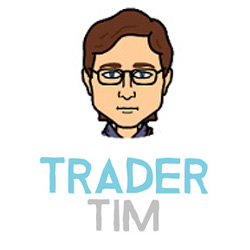Berkshire Hathaway insurance business has always been run with an iron discipline approach. Warren Buffett and Charlie Munger would rather shrink the business than take on poorly priced insurance risk. Thus, in the years preceding 1985 Berkshire was the slowest-growing large US insurer. In fact, it shrank.

It wasn’t that it withdrew from the market. Indeed, it was the industry’s most steadfast provider, but it would only quote premiums that “we believe to be adequate” (1986 letter) said Buffett. There are times, such as the lead up to 1985, when other insurers slash prices to bargain levels to maintain volume. Naturally, clients leave Berkshire and go to them during these times.
Then the cycle turns, as rivals run out of capital or become frightened by the losses generated by low premiums exit the market, and customers flood back to Berkshire. “Our firmness on prices works no hardship on…our employees: we don’t engage in layoffs when we experience a cyclical slowdown at one of our generally-profitable insurance operations. This no-layoff practice is in our self-interest. Employees who fear that large layoffs will accompany sizable reductions in premium volume will understandably produce scads of business through thick and thin (mostly thin).” (1986 letter)
This policy produced huge swings in volume of primary insurance business. For example, monthly volume of $5m premiums in the final quarter of 1984 jumped to about $35m in the first quarter of 1986.
A similar discipline, and therefore volume variability, pervaded the reinsurance business.
A low cost of float, not a no cost of float
The target of achieving profitability on underwriting, i.e. a combined ratio under one, is a harsh one. Most insurers are content to make small losses on underwriting which they make up for by investing the float. Even Buffett does not require a profit on underwriting, preferring the metric which compares the percentage underwriting loss on float with the rate of interest available on risk-free investments – see Table.
Profit record of Berkshire Hathaway Insurance businesses 1967-1995
(1) (2) Yearend Yield
Underwriting Approximate on Long-Term
Loss Average Float Cost of Funds Govt. Bonds
———— ————- ————— ————-
(In $ Millions) (Ratio of 1 to 2)
1967 ……… profit $17.3 less than zero 5.50%
1968 ……… profit 19.9 less than zero 5.90%
1969 ……… profit 23.4 less than zero 6.79%
1970 ……… $0.37 32.4 1.14% 6.25%
1971 ……… profit 52.5 less than zero 5.81%
1972 ……… profit 69.5 less than zero 5.82%
1973 ……… profit 73.3 less than zero 7.27%
1974 ……… 7.36 79.1 9.30% 8.13%
1975 ……… 11.35 87.6 12.96% 8.03%
1976 ……… profit 102.6 less than zero 7.30%
1977 ……… profit 139.0 less than zero 7.97%
1978 ……… profit 190.4 less than zero 8.93%
1979 ……… profit 227.3 less than zero 10.08%
1980 ……… profit 237.0 less than zero 11.94%
1981 ……… profit 228.4 less than zero 13.61%
1982 21.56 220.6 9.77% 10.64%
1983 33.87 231.3 14.64% 11.84%
1984 48.06 253.2 18.98% 11.58%
1985 44.23 390.2 11.34% 9.34%
1986 55.84 797.5 7.00% 7.60%
1987 55.43 1,266.7 4.38% 8.95%
1988 11.08 1,497.7 0.74% 9.00%
1989 24.40 1,541.3 1.58% 7.97%
1990 26.65 1,637.3 1.63% 8.24%
1991 119.59 1,895.0 6.31% 7.40%
1992 108.96 2,290.4 4.76% 7.39%
1993 profit 2,624.7 less than zero 6.35%
1994 profit 3,056.6 less than zero 7.88%
1995 profit 3,607.2 less than zero 5.95%
Buffett is comparing what he calls the “cost of float” with a rough proxy of what Berkshire would obtain if it invested all float in long-term government bonds.
Another way of looking at it i………………To read more subscribe to my premium newsletter Deep Value Shares – click here http://newsletters.advfn.com/deepvalueshares/subscribe-1


 Hot Features
Hot Features













